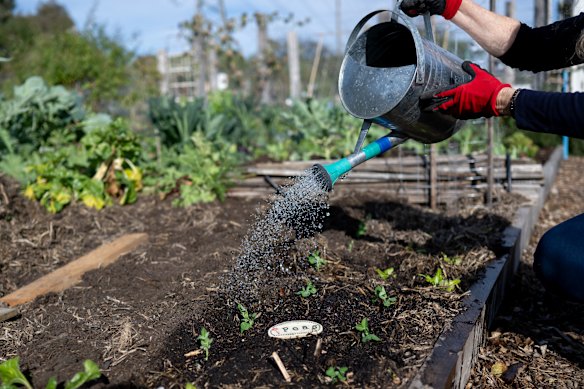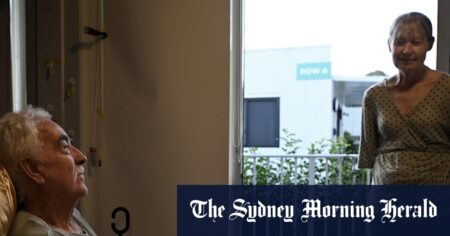CERES (pronounced “series”) has become a local sustainability leader and destination for nature lovers since it was converted from a rubbish tip into a community garden in 1982.
Jo Heriot and Angelo Iezzi said CERES was a place for art, magic and community.Credit: Penny Stephens
The garden, which has 650,000 visitors a year, now runs social enterprises such as a grocery store and the Merri Cafe as well as educational programs for all ages.
Locals Jo Heriot and Angelo Iezzi, both 74, have tended to their plot at CERES for almost a decade, and said the community garden was integral to the fabric of Brunswick East.
“I can’t even imagine that I’d want to live here if I couldn’t wander down to CERES,” Heriot said.
“[It’s] a really delightful, harmonious place for people to gather and share produce and knowledge, and it would be devastating if it wasn’t there for so many people – thousands of people – let alone all the school kids that have educational experiences there.”
Heriot is on the garden committee and has helped fundraise for the organisation, selling pottery signage for plots.
“That money goes towards trying to get new tools and equipment for the community gardens because we don’t have a lot of money, so it just helps,” she said.
When The Age visited CERES at the weekend, Iezzi welcomed visitors looking around the plots for ideas and gladly gave advice.
He said as a retiree, the garden was fundamental to his sense of community.
“That’s my network… there’s no other area in my life where I can go, and I can meet with say 20 people plus that I know, and interact with them and work with them and have morning teas with them,” he said.

Educational programs at CERES teach children about gardening and sustainability.Credit: Penny Stephens
Auditors of CERES’ 2023–24 financial report found its operational result had improved and the charity remained solvent, but expressed concern over a sharp drop in key financial metrics that created “material uncertainty that may cast significant doubt about the registered entity’s ability to continue as a going concern”.
Evans said those metrics may have worsened in the past year.
Since the audit, a two-year state government grant of $500,000 per annum has ended.
A state government spokesperson said the grant was spent on upgrading facilities, expanding the adult education program and helping CERES develop further revenue streams.
CERES has already made significant cuts to operational and staffing costs, according to the report, which showed an almost $600,000 turnaround into a marginal surplus.

Social enterprises such as the plant nursery help fund CERES.Credit: Penny Stephens
But Evans said there was a limit to what could be slashed while keeping the site open and free to the public.
She said she could not yet comment on which programs might be under threat until the strategic review was finalised in about six weeks.
Evans said the response to the fundraiser gave her hope, which on Monday had reached $91,000 of its $150,000 goal.
She said CERES cost about $2.5 million a year to operate, half of which came from its social enterprises and the rest from the government or philanthropy.
“We’re working to become more efficient internally and to generate more surpluses through our enterprises, but there’s still that component of external funding that we need year-on-year to survive like any other social enterprise,” she said.
Evans said CERES had not secured the funding it needed for the coming year because of more competition for fewer grants.
“There’s just not money in the economy in the way it was, and government spending has changed as well, especially in Victoria,” she said.
“We’re close to the wire, but we’ve got plenty of options, and one of those options is the love and support of our community.”
Read the full article here
















